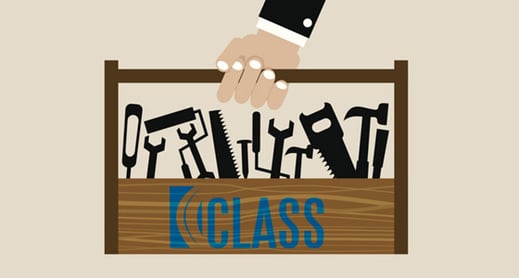
“Without teachers, life would have no class.”
Recently, I attended the NHSA conference in Washington DC, and if you’re like myself and many educators that attend conferences, you want to mingle and network with other educators. I’m always curious to ask these top three questions to fellow attendees when mingling:
- What’s your name?
- Where are you from?
- Do you teach?
On the first day of the conference, I sat next to a very nice lady from human resources who said she was at the conference to learn more about the CLASS tool because her organization was firing teachers based on their CLASS scores. My response was, “I would have run—not walked, but run—out the door! CLASS needs to be used for its intended purpose: it is a tool NOT a weapon!”
The Classroom Assessment Scoring System (CLASS) is intended to measure effective teacher-child interactions and improve teaching and learning. The CLASS measure must be coupled with a teacher’s professional development plans if it is to impact meaningful change. CLASS should be a positive experience for everyone who is involved within a center: the director, coach, teaching staff, and anyone who is directly involved in the process. If directors use CLASS to drive improvement and support teachers, they will gain buy-in from their teaching staff and the outcome will be happier teachers with higher CLASS scores.
From this conversation, and from others I have had over the years, I know that too often CLASS is implemented in ways that creates—at best—anxiety for teachers, and—at worse—disdain for the tool. Here are four ways that CLASS was introduced to me, which led to positive outcomes:
1. By Providing Support
On day one, my director, educational manager and coach were very supportive by giving positive feedback. As changes happened through the classroom, it was empowering to see my director, educational manager, and CLASS coaches acknowledge the change. Also, my CLASS coach and the educational manager were supportive by asking for feedback from the teaching staff, which they used to organize CLASS trainings.
2. By Keeping it Positive
CLASS was presented to the teaching staff and me as a positive tool that would help us grow as professionals.
3. By Not Using it Against People
From the very beginning, our educational manager and coach made clear that CLASS wouldn’t be used against us. They showed the teaching team that CLASS was a tool that could be used to improve teaching, and it became clear throughout the process that implementing CLASS was a positive move for our center.
4. By Keeping the Purpose Clear
The purpose of CLASS was well articulated: to help teachers lay the foundation to improve teaching by creating more meaningful teacher-child interactions and improving classroom quality.
Teachers are responsible for the next generation and for shaping the minds of our society. They need to be consistently improving their methods; every second is a teachable moment and must be meaningful. Teachers shape minds, and the better equipped a teacher is, the better outcomes for their students. CLASS gives teachers the tools to improve and to shape the minds of students at a higher level. After all, without teachers, life would have no class.

Cheri Moring discovered her passion for early childhood education when she began teaching at Head Start of Northeastern, Nevada in 2009. Over the past six years she has earned degrees in Early Childhood Education from Great Basin College in Elko, Nevada in 2012, received a Preschool Child Development Associate Certificate, became trained in Positive Behavior Support, and advanced in her program to become a lead teacher. But her greatest accomplishments have been in the classroom where she inspires and nurtures the minds of future generations and mentors other teachers. Cheri lives in Spring Creek, Nevada with her husband, Brian, and her daughter, Marissa. She lives life to the fullest and will try anything at least once (except sushi!).

